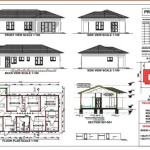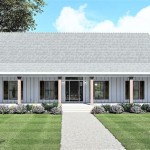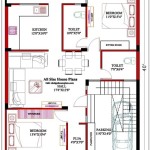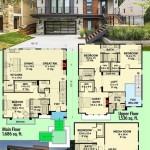Unveiling the Essence of Greek Revival House Plans
Greek Revival architecture has left an enduring mark on American architectural history, and its influence continues to inspire home designs today. Greek Revival house plans embody a classic style that combines timeless elegance with modern functionality. Here are the essential aspects that define these iconic structures:
Symmetrical Facade and Portico
Greek Revival houses are characterized by their symmetrical facades. The front door is typically positioned in the center, flanked by matching windows on each side. This balanced arrangement creates a sense of order and formality. The crowning glory of a Greek Revival home is its portico, a covered porch supported by elegant columns. This feature adds a touch of grandeur and shade to the entrance.
Monumental Columns
Columns are a defining element of Greek Revival architecture. They are typically massive, often Doric or Ionic in style, and add a sense of solidity and strength to the structure. The columns may extend from the ground to the roofline or support a pediment above the portico.
Triangular Pediment
The pediment, a triangular gable located above the portico or entrance, is another classic feature of Greek Revival houses. It often contains a decorative frieze or other architectural ornamentation. The pediment serves as a focal point and adds visual interest to the facade.
Entablature
The entablature is the horizontal band that runs above the columns. It consists of three elements: the architrave (bottom), the frieze (middle), and the cornice (top). The architrave is typically adorned with moldings, while the frieze may contain triglyphs (vertical bands) and metopes (square panels). The cornice crowns the entablature and provides a decorative finish to the facade.
Hipped or Gable Roof
Greek Revival houses typically feature hipped or gable roofs. Hipped roofs have four sloping sides that meet at a central point, creating a pyramid-like shape. Gable roofs have two sloping sides that meet at a ridge, forming a triangular pediment at one or both ends.
Fanlights and Sidelights
Fanlights and sidelights are common features in Greek Revival house plans. Fanlights are half-circle or semicircular windows located above the front door, while sidelights are narrower windows that flank the door. These elements provide additional natural light and create a welcoming entrance.
Ornamental Details
Greek Revival houses are known for their intricate ornamental details. Moldings, cornices, pediments, and even the columns themselves are often adorned with decorative elements such as dentils (small rectangular blocks), acanthus leaves, and rosettes. These details add a touch of sophistication and elegance to the overall design.
Interior Design
The interiors of Greek Revival houses are typically spacious and well-lit, with high ceilings and large windows. Floor plans often feature a central hallway with rooms on either side. The main rooms, such as the parlor and dining room, are often large and formal. Interior details may include cornices, moldings, and fireplaces with marble surrounds.
Conclusion
Greek Revival house plans offer a timeless and sophisticated architectural style that has endured for centuries. Whether you are seeking a grand estate or a charming cottage, the essential elements of Greek Revival design can create a home that exudes elegance, symmetry, and historical charm.

Greek Revival Colonial House Plans

Greek Revival House Plans For A Colonial Style 4 Bedroom

House Plan 98264 Greek Revival Style With 8210 Sq Ft 6 Bed

Plan 052h 0031 The House

House Plan 68466 Greek Revival Style With 2095 Sq Ft 3 Bed 2

Plan 68466 Greek Revival Style With 3 Bed 2 Bath Car Garage

Greek Revival Colonial House Plans

Greek Revival Style With 4 Bed Bath House Plans Sims Dream

House Plan 72126 Greek Revival Style With 8628 Sq Ft 7 Bed 8

Characteristics Of Greek Revival Home Plans








